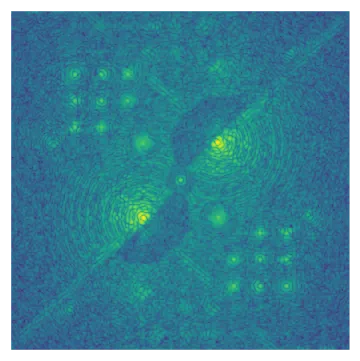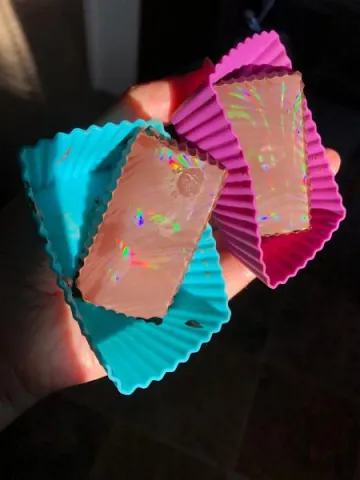Another Wavelength: Jennifer Lumbres

Today in Another Wavelength, we chat with 7th year Ph.D. Student Jennifer Lumbres currently advised by Dr. Jared Males (Steward Observatory) and Associate Prof. Olivier Guyon, through the Extreme Wavefront Control Laboratory at Steward Observatory.
Where are you from?
All over the place! I grew up in Moreno Valley, CA. When I was 10, I moved to Cubao, Quezon City, Philippines for 3 years and learned Tagalog on the spot. Finally, I moved to Rosemead, CA in the San Gabriel Valley, where boba milk tea reigns supreme.
What brought you to study optics?
As an undergrad in Electrical Engineering, my favorite topic was control systems. When the upper division elective for control theory was unavailable, my friend recommended me to take a fiber optics communication course instead. I enjoyed this course so much that I enrolled in an optics course through the Physics department. We had a field trip to the National Ignition Facility (NIF) at Lawrence Livermore, my first visit to a national laboratory. Seeing NIF's large scale optics fully sold me to pursue optics.
Along the way and with tremendous support by a village of mentors, I learned how adaptive optics and wavefront control are a combination of control theory and optics. It's what brought me to come here to pursue my PhD doing astronomical instrumentation.
Who is your hero in science?
Growing up, I had a daily 1-hour TV allowance and I prioritized Bill Nye the Science Guy on PBS. As a child of encouraging immigrant parents with limited and overstretched resources, I would not have considered building interest in science if it weren't for watching Bill Nye’s show. A later effect of his show was how it helped establish my foundation for being a better science communicator, ranging from public outreach to talking with colleagues outside my field.
Describe your research in 20 words or fewer.
I model wavefront control testbed and instrument systems, particularly for directly detecting exoplanets using ground and space telescopes.
Describe your research in 200 words or fewer.

High Contrast Imaging (HCI) is a direct detection technique collecting light from the source (exoplanet) orbiting a bright host star. Particular targets of interest are Earth-like exoplanets, which can be 10 billion times fainter than the star! An HCI instrument behind a large telescope can achieve this.
At the Extreme Wavefront Control Laboratory, we build HCI testbeds for ground and space telescopes. HCI algorithms are optimized with diffraction-limited wavefronts, but aberrations from atmospheric residuals and instrumentation errors are inevitable. We
remove aberrations by incorporating wavefront control (WFC) / adaptive optics (AO), a feedback system composed of a wavefront sensor measuring signal error and a deformable mirror to inject the correction. I work in two projects: MagAO-X, an extreme-AO coronagraphic HCI instrument for the 6.5m Magellan Clay telescope in Chile; and
Laser Guide Star cubesat, a WFC study on how an external source beacon cubesat can increase primary mirror segment cophasing SNR measurement to relax stringent space observatory requirements.
One of my research activities is developing a comprehensive static performance modeling technique for WFC testbeds and instruments. Using the ray-trace layout and measured optical surface qualities, I analyze the end-to-end performance through Fresnel propagation with closed-loop WFC. A robust model allows for HCI algorithm implementation before fine-tuning experimentation.
Name three neat facts about you.
- I am a chocolate confection hobbyist. I usually gift my chocolates; whether it's me walking down Meinel and Steward Observatory hallways giving them away or sending matcha chocolates with the MagAO-X team to Chile for their first light observation run. I recently attempted the diffraction chocolate challenge - it was tricky, but very fun!
- For the past 9 years, I have been growing out and donating my hair to Children with Hair Loss. My first donation was in 2014 and I've since donated an additional 2 times.
- I am part of Project PANOPTES, a global team of professional astronomers, students, and citizen scientists building low-cost robotic telescopes using basic hardware and DSLR cameras to map the night sky for observing exoplanet transits. I work on PAN10, UofA's unit supported by an SPIE student outreach grant. It's been an enriching opportunity that has presented many unique experiences:

- touring Google Boston; traveling to the Kingdom of Bhutan to teach students how to build their own unit (PAN018); and meeting Col. Chris Hadfield and Dr. Jill Tarter.
Research caption: A simulated static model of the MagAO-X coronagraphic PSF using the instrument's measured surface aberrations and closed loop correction. The dark hole regions (left of top PSF and right of bottom PSF) are regions of high contrast where exoplanets will be directly imaged.
